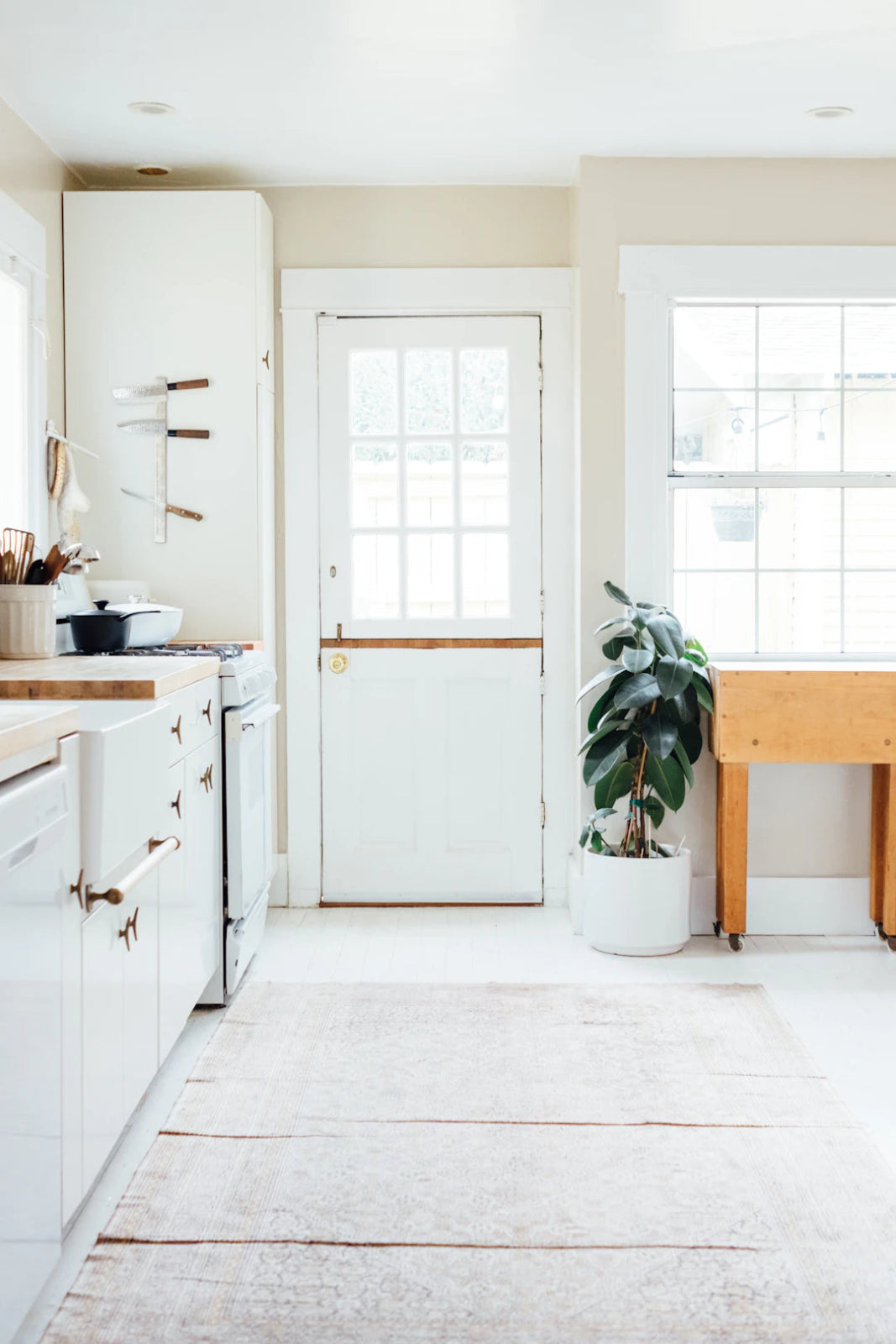Frequently Asked Questions
1. Why is kitchen sanitization important?
2. What are some daily cleaning routines for kitchen tools and utensils?
3. How should I clean and sanitize my cutting boards?
4. What are effective methods for cleaning kitchen surfaces and appliances?
5. How can I educate my family about kitchen hygiene?
Maintaining a clean and sanitized kitchen is crucial not only for aesthetics but also for health and safety. With foodborne illnesses on the rise, understanding the best practices for kitchen sanitization is more important than ever. This article will guide you through effective techniques and tips to ensure your kitchen remains a safe haven for food preparation and family gatherings. Get ready to make your kitchen shine with Gunk Getter Cleaning Gel!
Understanding the Importance of Kitchen Sanitization
Sanitization is the process of reducing the number of microorganisms on surfaces to a safe level. This is especially important in a kitchen where raw foods can harbor bacteria that pose health risks. Regular sanitization helps in:
- Preventing foodborne illnesses.
- Extending the lifespan of kitchen tools and surfaces.
- Creating a pleasant cooking environment.
- Building a routine that encourages overall home cleanliness.
Utilizing Gunk Getter Cleaning Gel is an effective way to keep surfaces sanitized and free from harmful bacteria. Now, let’s dive into the best practices for keeping your kitchen safely sanitized.
Keep Your Kitchen Tools and Utensils Clean
Daily Cleaning Routines
Establishing a daily cleaning routine should be your first step towards proper kitchen sanitization. After every meal, it’s important to wash your cookware, utensils, and dishes using hot, soapy water. This not only removes food residues but also minimizes the risk of cross-contamination.
An effective method to ensure all kitchen tools are sanitized includes:
- Washing with soap and water.
- Soaking in a diluted bleach solution for sanitization (if applicable).
- Rinsing with clean water.
- Air-drying or using a clean towel.
Special Care for Cutting Boards
Cutting boards are often a hotspot for harmful bacteria, especially plastic boards. It's essential to select the right cleaning method based on the material:
- Wooden Boards: Scrub with soap and hot water, followed by a vinegar solution for sanitization.
- Plastic Boards: Wash in the dishwasher or soak in a bleach solution.
A little extra care will go a long way in maintaining your boards. And, of course, always reach for Gunk Getter Cleaning Gel to ensure that all surfaces remain adequately sanitized.
Regular Surface Sanitization
Countertops and kitchen surfaces see a lot of action, so keeping them clean and sanitized is paramount. Here are some tips for maintaining cleanliness:
Daily Wipes
Using disinfectant wipes on counters and surfaces every day can quickly eliminate germs. Focus particularly on areas where raw foods may come into contact with surfaces, as this is where cross-contamination typically occurs.
Deep Cleaning Sessions
Aside from daily maintenance, scheduling deep cleaning sessions weekly or biweekly can help catch what daily routines might miss. Here’s how you can approach deep cleaning:
- Remove all items from countertops.
- Apply Gunk Getter Cleaning Gel on surfaces and let it sit for a few minutes.
- Wipe down thoroughly with a clean cloth.
- Don’t forget to clean underneath appliances such as microwaves, toasters, and ovens.
- Finish off by putting back all kitchen items.
The Role of Heat in Sanitization
Heat is an effective component in kitchen sanitization, especially when it comes to items that can withstand high temperatures. Here’s how heat can work for you:
Dishwasher Magic
Your dishwasher is a powerful tool for disinfecting plates, glasses, and utensils. Use the sanitize cycle if available, as it utilizes higher temperatures to kill off bacteria. Make sure all items are dishwasher-safe before using this option.
Boiling Water Method
For objects that cannot go into a dishwasher, boiling water is a practical option. This can be especially useful for items like kitchen rags and dish towels. Simply boil them in water for a few minutes to ensure maximum germ elimination.
Proper Food Storage Techniques
Food storage plays a significant role in kitchen sanitization. Unsafe food storage can lead to contamination and foodborne illnesses. Here’s how to ensure safe food handling:
Temperature Awareness
Keeping food at the appropriate temperatures is essential. Follow these guidelines:
- Refrigerate perishables within two hours of cooking.
- Store raw meats on the bottom shelf to prevent drippings onto other foods.
- Keep your refrigerator set at or below 40°F (4°C).
- Utilize a thermometer for ensuring the correct cooking temperatures for meats.
Label and Date Your Food
It’s easy to lose track of what’s in your fridge. Labeling and dating all items can help in promoting food safety. Make it a habit to check expiration dates regularly and toss out any items that may be unsafe to consume.
Keeping Your Sink Sanitized
The sink is one of the most used areas in the kitchen and often the most overlooked in terms of sanitization. Here are some best practices:
Regular Cleaning
Make it a habit to clean your sink daily. Use Gunk Getter Cleaning Gel and remove all food residues, followed by hot, soapy water. Rinse thoroughly to prevent any buildup.
Drain Maintenance
Don’t neglect the drain; it can become a breeding ground for bacteria. Monthly cleaning is recommended:
- Pour boiling water down the drain.
- Follow with a mixture of vinegar and baking soda.
- Flush with hot water again.
Maintaining Clean Appliances
Appliances are a necessary aspect of kitchen work, but they require attention. Neglecting to clean your appliances can lead to food waste odors, unhygienic conditions, and lower efficiency.
Oven and Stove Top Cleaning
After cooking, make sure to wipe down the oven and stove to eliminate spills and debris. When deeper cleaning is needed:
- Apply Gunk Getter Cleaning Gel to tough stains.
- Let it sit and then scrub off grease.
Microwave Maintenance
The microwave commonly collects food splatters. To keep it sanitized:
- Heat a bowl of water with lemon juice for 5 minutes.
- Wipe surfaces with a damp cloth afterward to remove stains and odors.
Educating Family Members
Keeping a clean kitchen is often a team effort. Educate your family members on the importance of hygiene in the kitchen. Make it fun and interactive:
- Set up a cleaning schedule.
- Make sanitization a family responsibility.
- Reward good kitchen hygiene habits.
Transform Your Kitchen with a Plan
Implementing the best practices for kitchen sanitization doesn’t have to be daunting. With proper planning and the right tools, including Gunk Getter Cleaning Gel, you can achieve a clean kitchen that is safe for all. Remember, cleanliness extends beyond appearance; it’s about health and safety.
So, roll up your sleeves, gather the whole family, and make cleaning a top priority. The kitchen is the heart of the home and deserves consistent care to remain a healthy environment for all your culinary adventures!
Step into the Shopify or Wix store of another user. Begin your visit by clicking this store link. Kindly note that this is a promotional link, and we do not take responsibility for the content of the linked store.


Share:
Tips for a Fresh and Clean Bathroom All Year Round
The Essential Guide to Air Quality and Cleaning Regularly